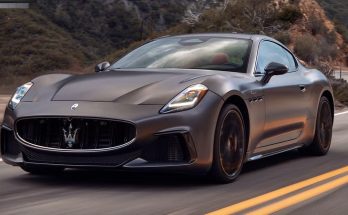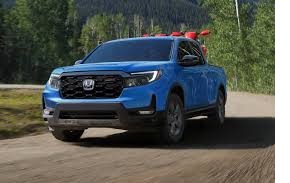DFCO, or Deceleration Fuel Cut-Off, is a feature in modern cars that saves fuel by reducing or completely shutting off fuel supply when the accelerator pedal is released and the vehicle is coasting or decelerating. During DFCO, the throttle valve is partially closed to limit the amount of air entering the engine, which in turn reduces fuel consumption.
However, not all cars fully open the throttle valve under DFCO, and there are a few reasons for this decision.
Why don’t all cars fully open the throttle valve under DFCO?
Firstly, maintaining partial throttle opening allows for smoother and more seamless transitions when the driver re-applies the throttle. By keeping the throttle partially open, the vehicle can respond more quickly and smoothly to driver inputs, which enhances the overall driving experience.
Secondly, partial throttle opening can help stabilize engine combustion. A fully closed throttle may create an excessively lean fuel-air mixture, leading to rough idle or unstable combustion when the throttle is re-applied. By keeping the throttle partially open, the engine can maintain a better fuel-air ratio and prevent misfires or hesitation when the driver accelerates again.
Lastly, fully opening the throttle valve under DFCO can result in increased wear and tear on the throttle body and associated components. The sudden rush of air can cause turbulence, which can affect engine performance and potentially damage the throttle assembly. By keeping the throttle partially closed, car manufacturers aim to minimize potential issues and ensure the longevity of these components.
How do modern cars idles without an idle air control valve
Modern cars are equipped with electronic throttle control (ETC) systems, which have replaced the traditional idle air control valve (IACV) in many vehicles. The ETC system uses sensors to monitor various parameters, such as engine speed, throttle position, and airflow, and sends this information to the engine control unit (ECU).
The ECU then calculates the appropriate amount of air and fuel mixture needed for idle operation based on the sensor inputs. It controls the throttle plate electronically to regulate the airflow entering the engine, thereby maintaining the desired idle speed.
By eliminating the need for an idle air control valve, the ETC system provides better control over idle speed, smoother transition between different engine loads, and improved fuel efficiency.
What happens if you unplug idle air control valve?
If you unplug the idle air control valve (IAC), it will have several effects on the engine’s performance:
- Rough Idle: The IAC is responsible for maintaining the engine’s idle speed. When unplugged, the engine may idle at a consistently higher or lower RPM, leading to a rough and unstable idle.
- Stalling: The IAC allows air to bypass the throttle plate, ensuring a smooth and stable idle. Without the valve, the engine may not receive enough air at idle, causing it to stall or die out.
- Difficulty Starting: The IAC also plays a role in starting the engine by controlling the air-fuel mixture. If it’s unplugged, the engine may experience difficulty starting, requiring more effort to get it running.
- Poor Fuel Economy: Without proper control of the air-fuel mixture, the engine may run too rich (too much fuel) or too lean (too little fuel). This can result in decreased fuel efficiency and potentially lead to other issues like fouled spark plugs or catalytic converter damage.
It’s important to note that unplugging the IAC is not a recommended solution for addressing any underlying issues. If you suspect a problem with the IAC, it’s best to have it diagnosed and repaired by a qualified mechanic.
Why won’t engine start when we press throttle while starting?
There are several reasons why an engine may not start when the throttle is pressed during starting:
- Safety Mechanism: Many engines have a safety mechanism that prevents the throttle from engaging while starting. This is to prevent the engine from revving at high speeds and potentially causing damage.
- Fuel Delivery Issues: If there is a problem with the fuel delivery system, such as a clogged fuel filter or a faulty fuel pump, the engine may not receive enough fuel to start when the throttle is pressed.
- Ignition Issues: If there is a problem with the ignition system, such as a worn spark plug or a faulty ignition coil, the engine may not ignite the fuel-air mixture when the throttle is pressed.
- Battery Issues: If the battery is weak or dead, it may not have enough power to start the engine when the throttle is pressed.
- Engine Mechanical Issues: If there are underlying mechanical issues with the engine, such as a seized piston or a broken timing belt, the engine may not start when the throttle is pressed.
It is best to consult a mechanic to diagnose the specific cause of the problem and to perform any necessary repairs.
Related posts:
How do I know if my car uses DFCO?
Did my serpentine aux belt shrink?
Why don’t all cars fully open the throttle valve under DFCO? – Conclusion
In conclusion, while it may seem counterintuitive, not all cars fully open the throttle valve under DFCO to provide a smoother driving experience, stabilize combustion, and minimize wear on throttle components.
Thanks for reading.



